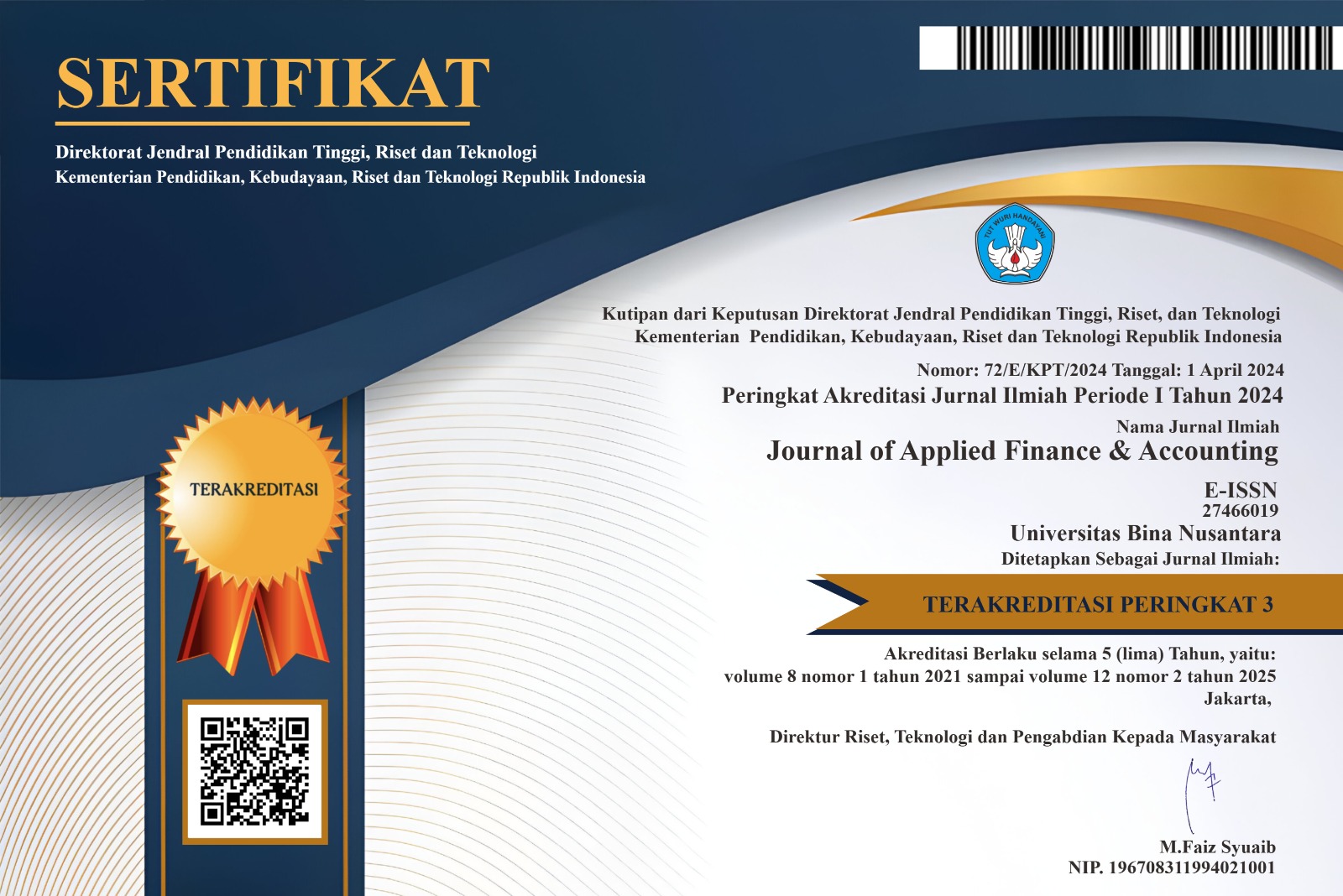RELATIVE VALUATION MODEL ANALYSIS OF IDX
DOI:
https://doi.org/10.21512/jafa.v6i1.837Keywords:
relative valuation, price to earnings, price to book value, price to cash flow, price to sales, prediction accuracy.Abstract
There are various valuation models can be used by investors in order to predict the stock value. This paper focuses on the Relative Valuation Model, which is the popular model used by investors as it is easier to use compared to other models. The aim of this paper is to compare the prediction accuracy of various ratios in the model. Ratios examined in this paper are Price to Earning (PE), Price to Book Value (PBV), Price to Cash Flow (PCF), and Price to Sales (PS). Using the LQ45 listed stocks during period 2006 – 2010, it is found that, overall, PBV appears to be the best ratio to predict LQ45 stocks in Indonesian equity market. However, mixed results are found in the yearly analysis, in which PE, PBV, and PCF result in lower prediction errors, in different years. In the sector industry analysis, both PE and PBV are the best predictors in three sectors each. The descriptive analysis is supported by the hypo research testing that shows the accuracy of examined ratios is different. The research result implication is that investors should take time and sectors into the account before choosing a single ratio as a predictor.
Downloads
Published
Issue
Section
License
Authors who publish with this journal agree to the following terms:
Authors retain copyright and grant the journal right of first publication with the work simultaneously licensed under a Creative Commons Attribution License that allows others to share the work with an acknowledgement of the work's authorship and initial publication in this journal.
Authors are able to enter into separate, additional contractual arrangements for the non-exclusive distribution of the journal's published version of the work (e.g., post it to an institutional repository or publish it in a book), with an acknowledgement of its initial publication in this journal.
Authors are permitted and encouraged to post their work online (e.g., in institutional repositories or on their website) prior to and during the submission process, as it can lead to productive exchanges, as well as earlier and greater citation of published work (See The Effect of Open Access).




